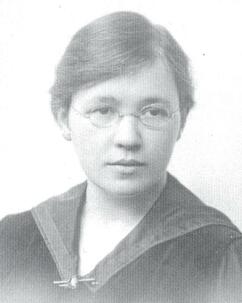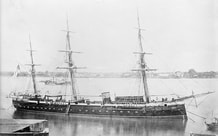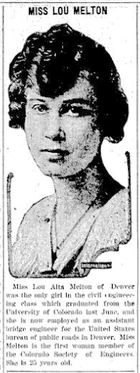 Engineer of the Week No. 18 Frances Beatrice “FB” Bradfield OBE, BA, FRAeS (1895 - 26th February 1967), windtunnel expert, on the 52nd anniversary of her death. Yorkshirewoman Frances Bradfield was the daughter of a Wesleyan minister and was able to go to Newnham College, Cambridge, graduating in maths in 1917 before Cambridge, long before it confered actual degrees on women. Frances Bradfield was known widely as “FB”. She was the first to apply to the RAE when, at the end of WW1, it specifically advertised for women technical staff, and became one of the first women directly recruited to the Royal Aircraft Establishment Farnborough in 1918, where she would have a career in the use of wind tunnels, being promoted to be Head of Small Tunnels from 1934, as an “individual merit Senior Principal Science Officer”. She gained a reputation as a quick and reliable researcher but was not very handy with tools herself. She specialised in aerodynamics and stability, working with Dr G.P. Douglas for most of their respective careers.Her work was so exceptional that in 1935 she was put onto the male pay grade and RAE directors had to fight to keep her on such preferential salaries throughout her career.
1 Comment
 Engineer of the Week No. 17. Kate Maslen, aeronautical researcher. Kathleen (Kate) Rosa Maslen, BSc, HonMBSSM (3rd October 1920-2002) Kate Maslen was born in north London, her father being a clerk in local governement. She was able to go to London Unversity’s Bedford College during the Second World War and gain a 1st class honours maths degree. As it was war time she got no choice in what she did next, as she was immediately directed to the Royal Aircraft Establishment at Farnborough, where she would remain for her entire working life. She was put in the Experimental Stress Analysis section because she was the only maths graduate they were sent that year who knew what a Wheatstone Bridge was- so they thought she would understand stress gauges! Her work was in the Structural and Mechanical Engineering Department and was on the very early development and use of simple, wire strain gauges in testing large aircraft components.  Group of Sabey with HRH Duke of Kent at CSMA’s 1973 jubilee lunch. Group of Sabey with HRH Duke of Kent at CSMA’s 1973 jubilee lunch. Engineer of the week No. 16. Today we remember Dr Barbara Sabey, road safety engineer, on the 6th anniversary of her death. Barbara Ethel Sabey ISO, BSc, PhD (c.1928-24th Feb 2013) Barbara Sabey was probably the most significant contributor to road safety that you have never heard of. A physics graduate whose initial work was on friction and the interactions between tyres and road surfaces, over a lifetime career at the UK government’s Transport and Roads Research Laboratory and then in private consultancy, she provided the rigorous science and engineering that supported road safety policies we now take for granted. Tyre tread depth rules, obligatory seat belt wearing, alcohol breath tests, road design – all these now-standard preventative measures came from her work.  Engineer of the Week No.15, on her 102nd birthday is Past WES President Hettie Bussell, the UK’s first female railway engineer. Henrietta (Hettie) Langdale Bussell (19th February 1917- December 1996) Hettie Bussell was born in London in 1917 but when she was 12 the family moved to Newport, Monmouthshire where she won a scholarship to the local new grammar school. Her father Herbert Bussell had been a builders’ clerk but joined Great Western Railways where he became a draughtsman in their Wales office. Apart from war service in the Royal Engineers he remained with Great Western Railway (GWR) all his life, which was also where Hettie worked for 40 years. She left school in 1933 in the depths of the Great Depression and found it very hard to find any work but having come 2nd out of 6 entrants in GWR’s exam, she becaume a temporary tracer in 1934. She was the first female in such a role and the only woman in the Cardiff office, as all the clerical work there was still being done by men only. It is believed that she was the UK’s first woman railway engineer.  Engineer of the Week No. 14 – Mrs Maurice Hewlett Happy 155th birthday, ‘Billy’! Hilda Beatrice Herbert (Mrs Hewlett) 17 February 1864-21 August 1943 Publicly known mainly by her married name of Mrs Maurice Hewlett, but ‘Billy’ to her friends, Hewlett was England's first licensed woman pilot and was an early bicycle and motor car enthusiast and race participant. The daughter of a clergyman, Hewlett’s formal training had been at the National Art Training School in South Kensington, in woodwork, metalwork, and needlework. In 1888 she married lawyer and author Maurice Henry Hewlett and they had a son and daughter but separated in 1914. He may have been baffled by her interests but he did invest money in her factory.  Engineer of the Week No. 13. Today we remember Past WES President Dorothy May Cridland on her 116th birthday. Dorothy May Cridland Assoc.IMechE (15th February 1903 - 25th May 1987) was born in north London in 1903, her father being a chemist/pharmacist with his own business. On leaving school in the 1930s with apparently few prospects and not being from a wealthy family, she immediately got a junior administrative job with Leyland Motors Ltd. She remained with them until 1955 gradually acquiring more technical knowledge of their vehicles and rising through technical sales posts to become deputy to Leyland’s southern regional manager .  Henrietta Vansittart (nee Lowe)(1833 or 1840 - 8th February 1883) Henrietta Lowe Vansittart is often considered to be the first British woman to work as a ‘proper’ engineer or naval architect. Her father James was a blacksmith-inventor who was not doing well financially at that time but was registering patents not long after her birth. Using his wife’s money and connections he submitted ideas for novel propellor designs to the Royal Navy but by the time Henrietta was an adult the family was in penury. This seems to have been due to litigation problems protecting his patent, despite the adoption of his general scheme for submerged propellers. He won all his court cases from 1842-50 but still gained no financial benefit. The Admiralty and others interested in testing propeller-driven vessels, made use of the Lowe concepts, without paying him. From 1857 until her father’s death in 1866, Henrietta was his assistant, and after his death she carried on the work.  Engineer of the Week No. 11. This week we wish one of the USA’s first female engineers, Lou Alta Melton, a happy 124th birthday Lou Alta Merrill (nee Melton) BSc CivEng(February 1895 - July1974) Daughter of Sherd Melton and Hesta Long, she was born in Texas but raised in Bayfield, Wisconsin and when in 9th grade at school she was reported in the local paper as having perfect attendance. She was an enthusiastic basketball player in high school and taught in a Colorado primary (grade) school before going to study for a civil engineering degree at the University of Colorado, from which she graduated in 1920. She then accepted a position with the United States Bureau of Public Roads and, after serving in the drafting department, was promoted to Junior Bridge Engineer. |
- Home
- Electric Dreams
- All Electric House, Bristol
- Top 100 Women
- Engineer of the Week
- The Women
- Timeline
- WES History
- EAW
- Teatowels For Sale
- 50 Women in Engineering
- Museum Trails
- Waterloo Bridge
- History Links
- Blue Plaques
- Virtual Blue Plaques
- Career and Inspiration Links
- Contact
- Outreach
- Photo Gallery
- Bluestockings and Ladders
